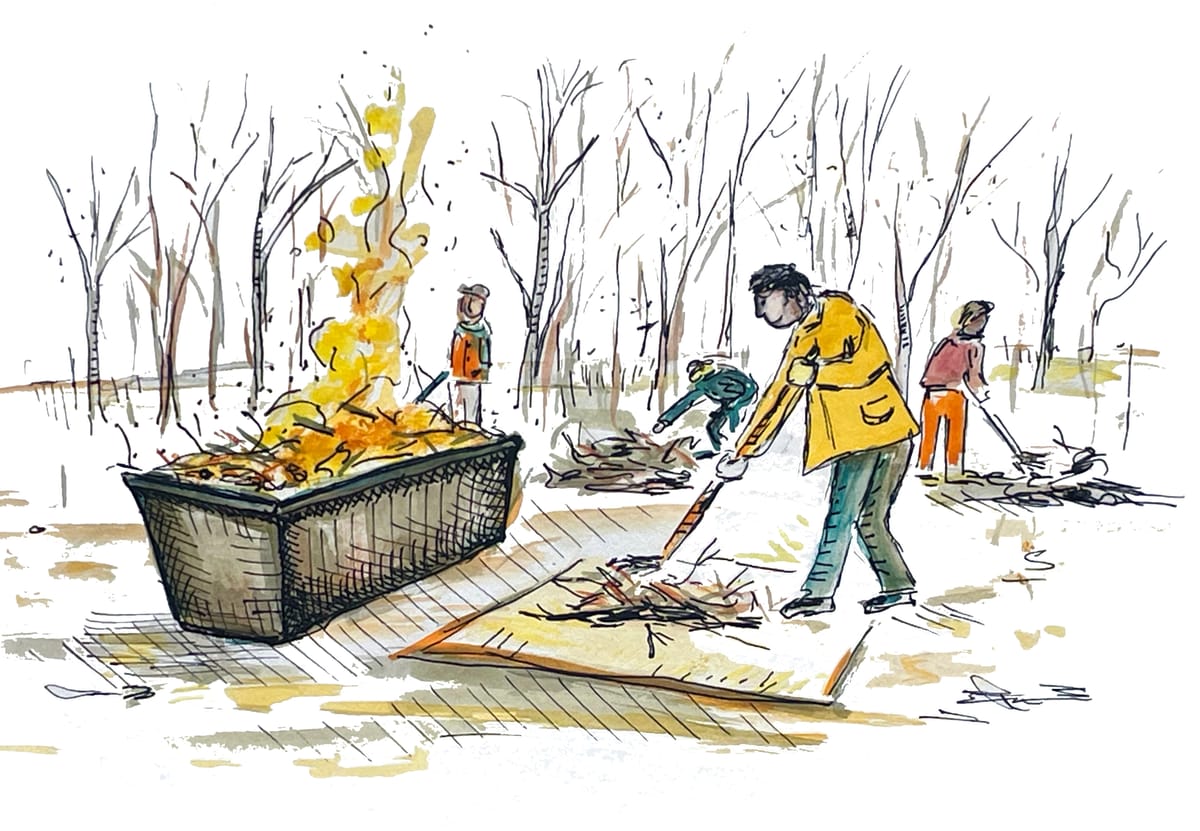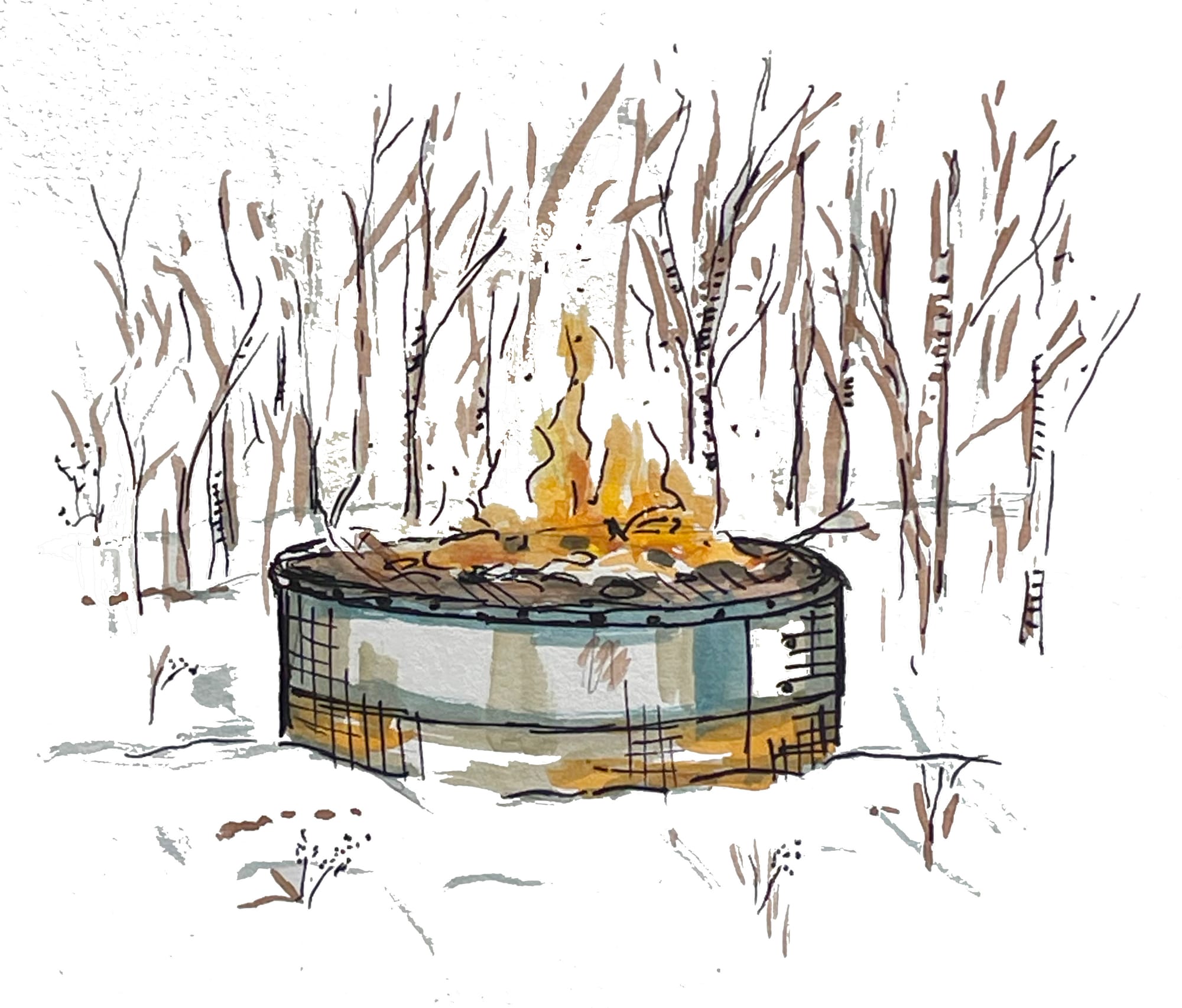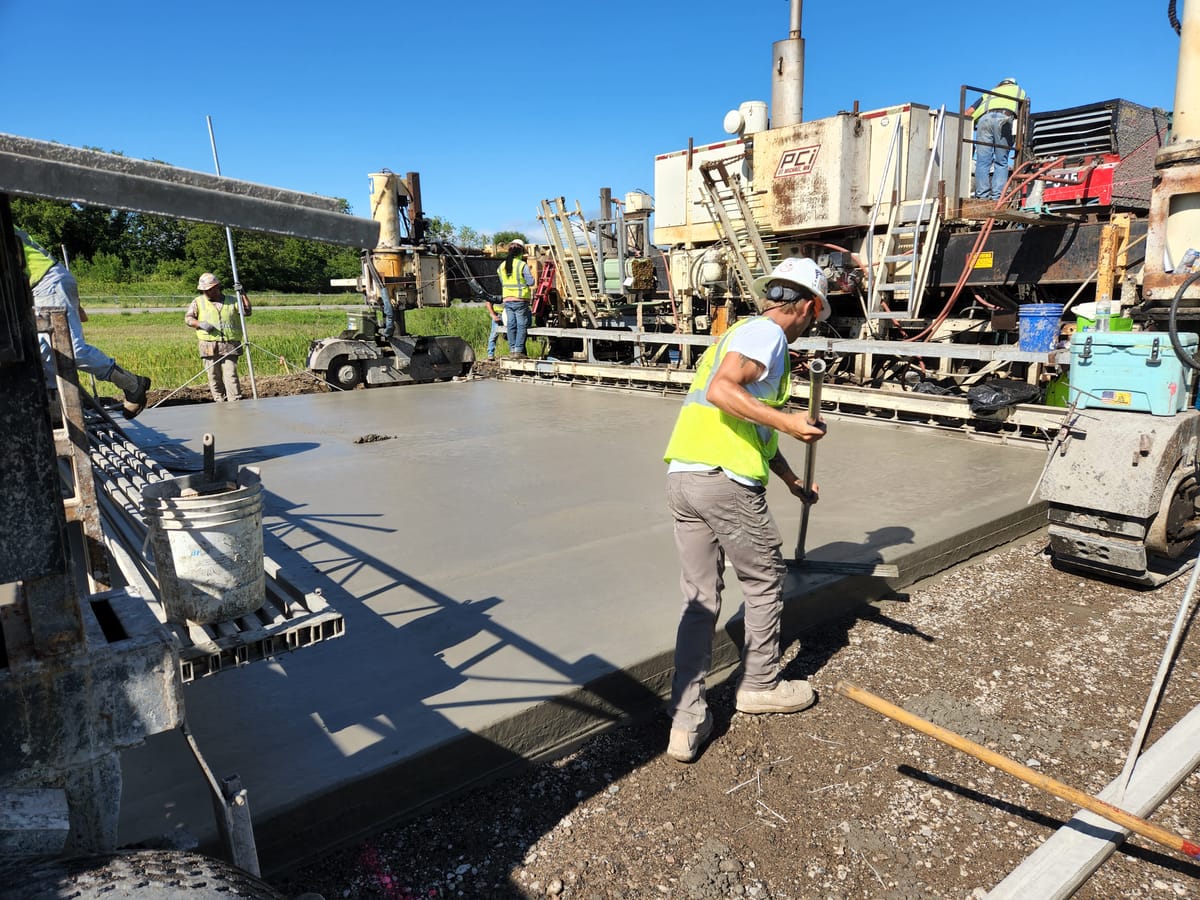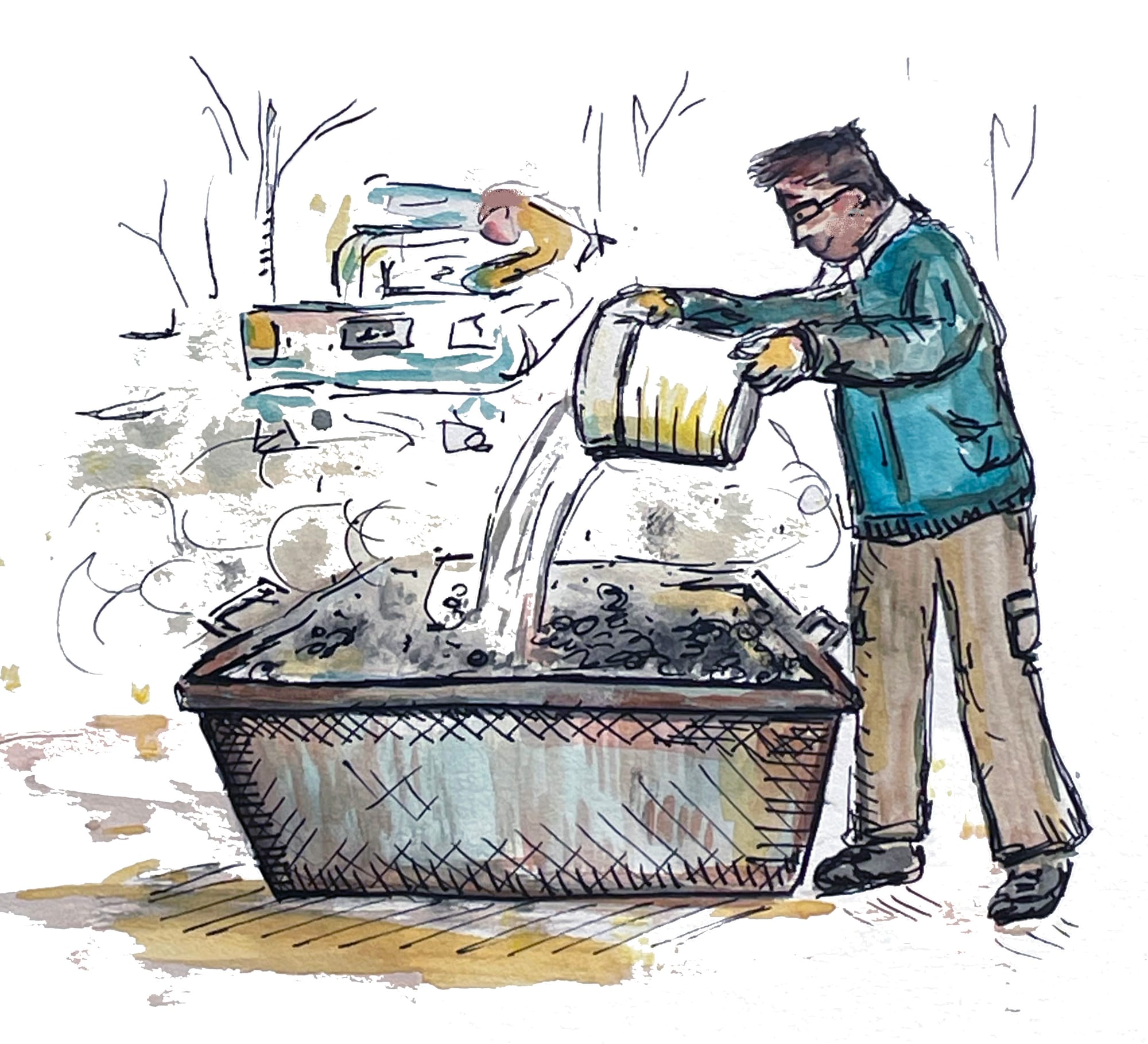Burn brush and store carbon: How biochar works, falters as a potential climate solution
Even though the benefits of biochar for carbon sequestration are widely recognized, there are challenges to implement its use at scale.

SAUK CENTRE – Brush piles up quickly on Early Boots farm, where over the course of a decade, Tyler Carlson converted acres of land into silvopasture – a mix of trees and grazing land for his cows. The regenerative agricultural practice supports carbon sequestration, habitat for wildlife, and benefits his cattle. It also leaves Carlson with a lot of waste to manage.
Carlson is the Silvopasture and Agroforestry Project Lead at the Sustainable Farming Association of Minnesota. In 2012, he started the farm on land his family has owned since the 1960s. Now, in addition to his work on the farm, he regularly teaches how to implement silvopasture practices across the state. Whether someone converts a forested area to a field, or plants trees to return an area to an oak savanna, it generates leftover plant matter commonly referred to as biomass.
Carbon sequestration is one of the benefits of regenerative agriculture, but the common methods of burning and chipping waste lead to carbon emissions. This is why Carlson started looking for other ways to manage biomass. Although he heard of biochar in the past, he started to consider it more seriously when he came to an impasse about what to do with the plant material.
Biomass isn’t just an issue for farmers like Carlson. Deadfall littered across forest floors means any errant spark could set them ablaze. Pests like Emerald Ash Borer have left counties and homeowners straining to dispose of thousands of dead trees. “Up in the northeast, there's trees dead either from stress, or drought, or storms, and insects and fungus,” said Carlson. “There's biomass being generated that has to be dealt with.”
Waste is now widely recognized as a contributor to the climate crisis. Solutions range from reducing production to recycling to limiting food waste, the Environmental Protection Agency says. Creating circular models where a product can be reused, rather than meet an “end point” like a landfill or incineration, is one way to reduce greenhouse gas emissions. The reduction of greenhouse gasses is key to limiting the worst impacts of climate change, according to the EPA.
A downed tree branch on a farm may not seem like it fits into a circular waste model, but like any other matter, it releases stored carbon at the end of its life cycle. “When we burn it, we feel like we're just releasing all this carbon,” explained Carlson, “and not really helping out the climate catastrophe we find ourselves in.”
The process of pyrolysis and its byproduct, biochar
As its name suggests, pyrolysis, the method used to make biochar, involves burning. However, unlike lighting a brush pile where it stands, the process creates an oxygen depleted environment that changes the molecular form of the end product. At the local level of production, it’s made by packing a simple, steel, five-sided kiln from the top with plant matter.
“There's as much art to it as there is science in using the kilns,” said Carlson. “But it's pretty straightforward.”
The high heat and low oxygen create an end product similar to charcoal, but with a slightly different structure. Thanks to the honeycombed molecular shape of biochar, the carbon atoms remain strongly bound to one another, making them resistant to decomposition.

Nick Rich-Vetsch, who sits on the Minnesota Composting Council, spoke to the benefit of pyrolysis versus compost. Compost, even when effectively managed, will still release carbon within a few dozen years. “The advantage of biochar is that it can take up to half of that carbon in a material and lock it into a carbon fiber tape that'll last for hundreds to thousands of years in the soil,” said Rich-Vetsch.
With 25% of greenhouse gas emissions in the state attributed to agriculture, forestry, and land-use, climate centered solutions for biomass management are imperative, according to the Minnesota Pollution Control Agency. Biochar is included in the MPCA’s agricultural best management practices guide and could reduce greenhouse gas emissions by 1.27 tons per acre, according to the guide.
Even though the benefits of biochar for carbon sequestration are widely recognized, there are challenges to implement its use at scale.

Challenges and solutions for implementation
The first challenge facing a wider use of biochar is the amount of labor involved. Once brush or highly invasive plants like buckthorn are cleared, accessing a kiln and taking the time to burn the biomass correctly can deter people. “Just burning the pile is a lot easier and faster,” Carlson explained. “You're adding another layer of work, effort, planning, and coordination for a landowner.”
A major investment in local infrastructure would make the process more attractive. The land management nonprofit Great River Greening utilizes volunteers to help maintain public land. “Biochar has become part of their work because they're tired of torching the piles just like I am,” said Carlson.
Organizations like Great River Greening help make biochar more accessible by sharing the use of their kilns. “At Sustainable Farming Association, we love the idea of portability and mobility of the kilns,” explained Carlson. “Bring the kiln to the material, process it, and then use that material as close as you can on the farm. If we can figure out how to do it right.”

Although he agrees that biochar is a net positive way to manage waste, Carlson said he’s wary of using it as a widespread soil amendment because it’s not a standardized product. The type of plant material fed into the kiln creates unique characteristics in the resulting biochar.
“It's hard to make recommendations because the results from it in soil systems are really all over the board, from really miraculous magical things happening in degraded soils to yield drag,” explained Carlson. Without better understanding of these characteristics, he said there’s no way to guarantee how biochar will impact soil health.
Rather than using relatively low-tech kilns directly on the land, there are initiatives to industrialize biochar production that would create a more uniform product. However, the economic investment, materials used to build facilities, and other aspects cancel out the reduction of greenhouse gas emissions. “Most of the biomass for energy schemes fall apart because of trucking,” Carlson said. “The economics and the full environmental purpose of it starts to unravel.”
More information is needed to lessen the carbon impacts of biomass management with biochar, Carlson said. This means making kilns available, educating people about how to use them, and studying how the product will change soil. Until then, it will remain difficult for the practice to become widespread.
Meanwhile, Carlson is collecting biomass on his farm. “We haven't gotten around to getting kilns yet,” he said. “We may in the next few years, but so far, I'm just generating piles of biomass and waiting. I haven't torched them yet.”
